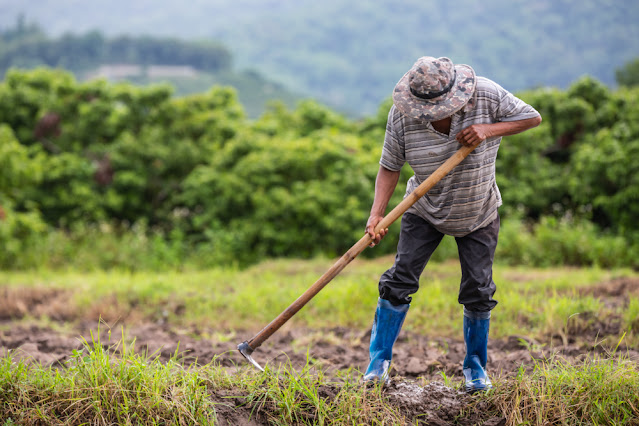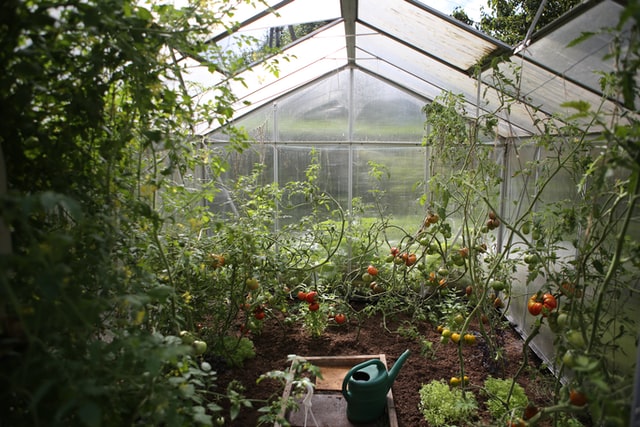 |
Regenerative agriculture - the better organic or nonsense? |
What exactly is regenerative agriculture? Many farmers certainly cannot answer this question right away.
So a new fashion? Probably not, one has to say - because the concept comes - like so many new things - from America and is already 50 years old. But the idea of regenerative agriculture has already found several supporters in Germany as well.
So what is behind it: One of the inventors is the American Robert Rodale, who developed the concept in the USA in the 1970s and runs the Rodale Institute for this purpose, and also Christine Jones from Australia. The agricultural approach is described in the USA with the slogan "Put the carbon back into the soil".
It is therefore about enriching the soil with organically bound carbon ( humus ). But one thing is clear: humus build-up is a lengthy and complex process. Most of the carbon introduced is broken down again relatively quickly and released as carbon dioxide (CO2). Only a small part remains in the ground and is stored in the long term.
And here there is a finding from the Thünen Institute that contradicts regenerative agriculture. To put it in a nutshell: cultivating the soil without a plow does nothing to build up humus – but cultivating catch crops does. There is also no scientific confirmation of the possible advantages of regenerative management methods - at least not from an official source.
Around 50,000 hectares of regenerative agriculture in Germany
But back to regenerative agriculture. This year, the topic was discussed intensively at the Farm & Food Congress in January 2020: " Regenerative agriculture is a form of land use in which we try.
Instead of just fighting or avoiding the symptoms of our prevailing production model, we can try to use technology to change the causes as well,” said Benedikt Bösel at the Farm & Food Congress.
Bösel is the managing director of the Schlossgut Alt Madlitz farm in Brandenburg. “We try to implement new methods and see how they work and how we can scale them,” Bösel explains. However, there are not many farmers in Germany who think like Bösel. According to current estimates, around 50,000 hectares in Germany are farmed according to the principles of regenerative arable farming - both organic and conventional farms. Organic farmers, on the other hand, farm 1.6 million hectares - that's 10 percent of the total area.
The pioneers and best-known practitioners of regenerative agriculture in Germany currently include: Friedrich Wenz from Baden-Württemberg, Dietmar Näser from Saxony and Ingrid Hörner from Hesse. Friedrich Wenz is a Demeter farmer – i.e. an organic farmer. His farm has been working cattle-free and plow-free for decades. Dietmar Näser is a freelance crop cultivation consultant and Ingrid Hörner also runs an agricultural business. She deals with the recultivation of agricultural land after structural changes.
Regenerative: humus enrichment, cover crops, and compost tea
The goals of regenerative arable farming are The activation and strengthening of soil life and the natural accumulation of humus. This also includes greening the field all year round if possible. This is mainly done by undersowing main crops such as cereals, maize, or rapeseed. Cover crop cultivation is also seen as an important way of extending soil cover.
We strive for shallow incorporation of the catch crops - the so-called surface rotting. The undersown crops recommended by Näser and Wenz are mixtures of grasses, grain legumes, and cruciferous plants. The aim of the measures is to reduce nutrient losses - for example through nitrate leaching, the suppression of weeds, and better plant health. One result of all these measures should be a significant reduction (or even a waiver) of plant protection and fertilizer. In addition, a renunciation of herbicides is sought.
According to Wenz, regenerative arable farming also includes the use of plant ferments, the so-called Rottelenkernel. It is a fermented brew made from field and garden herbs as well as the shoot tips of various shrubs. These are applied when the catch crop is worked in, initially up to a quantity of 100 liters per hectare.
So-called compost tea is also used. This is made from compost material whose microorganisms are greatly multiplied in warm molasses and water. In Friedrich Wenz's experience, a total of 0.1 to 0.2 percent humus can be built up every year with regenerative agriculture. This corresponds to a storage potential of approx. 8 to 15 t/ha CO2.
However, the effects of compost tea and Rottelenkern are scientifically disputed.
The results tend to be positive, but not particularly clear," says Ines Fritz from the University of Natural Resources and Life Sciences in Vienna.
All in all, the scientific confirmation of the desired goals and modified methods is also still pending. However, the Augustenberg Agricultural Technology Center in Baden-Württemberg is in the process of scientifically examining the measures of regenerative agriculture about crop cultivation and ecological effects. The eligibility for funding of regenerative agriculture and individual measures is also examined.
The soil should regulate itself
Biobauer-Wenz emphasizes: "In regenerative agriculture, the soil should only be tilled if necessary and then very shallowly. Equipment such as the tiller or the rotary plow is particularly suitable for this." From his point of view, the only exception is deep loosening. "Deep and turning cultivation, on the other hand, would destroy the structure and counteract the build-up of humus," says Wenz. So the recommendation is clear: no plow!
On the other hand, a permanent green cover and a low cultivation intensity should enable the soil creatures to develop undisturbed. When earthworms, bacteria, fungi, and other soil organisms digest organic material, they not only make nutrients available to plants but also create humus, say the pioneers of regenerative tillage.
According to Friedrich Wenz, it is also crucial for an increase in humus that plants and soil organisms work well together. The soil organisms do not only get the carbon from harvest residues, catch crops, or manure - but also from root secretions of living plants, says the organic farmer.
Friedrich Wenz explains the approach of the system as follows: "Regenerative agriculture tries to counteract the problems with healthy topsoil. Our job as farmers is to create the framework conditions that allow the soil to regulate itself. Because if you bring soil life into balance, weeds also have a harder time.
No binding rules - but economic advantages?
According to the founders of the process, there are (so far) no uniform and binding rules on what regenerative agriculture should look like in Germany. Every farmer must therefore find his own way for his business. Organic farmers do without synthetic pesticides and fertilizers anyway. However, a conventional farmer using the process can continue to use it if they feel the need to, adds Wenz.
According to Friedrich Wenz, there are no plans to label products from regenerative agriculture with a uniform label, as is the case with organic products, for example. "We are just at the beginning of a dynamic development and want to take everyone with us and avoid trench warfare," explains Wenz the procedure. A label that prescribes rigid guidelines tends to get in the way of this approach, he believes.
Wenz sees the economic advantage of the concept of regenerative agriculture in reducing the costs of plant protection and fertilization and in generating high and stable yields through fertile soil - even with increasing weather extremes.







.png)
No comments:
Post a Comment